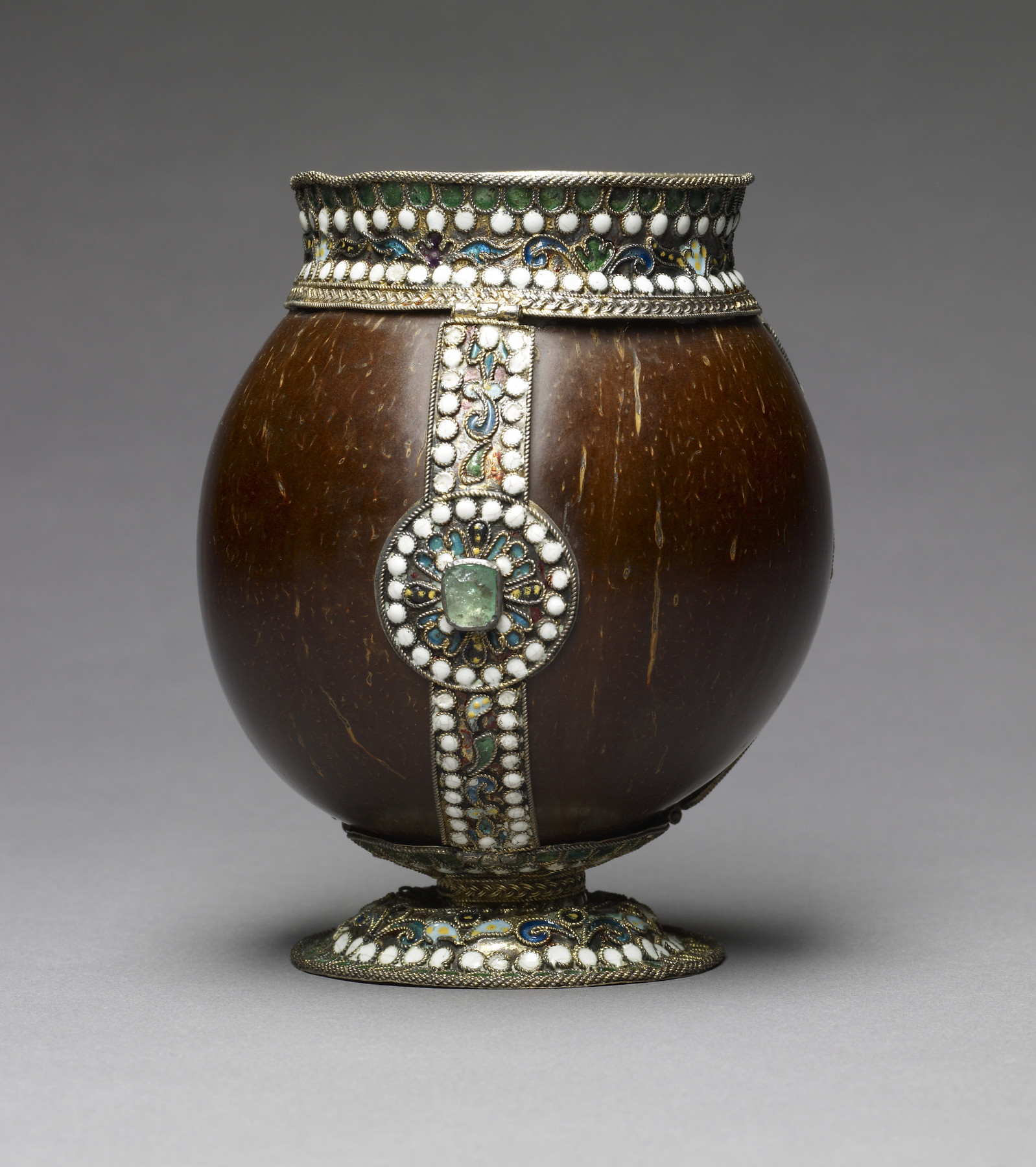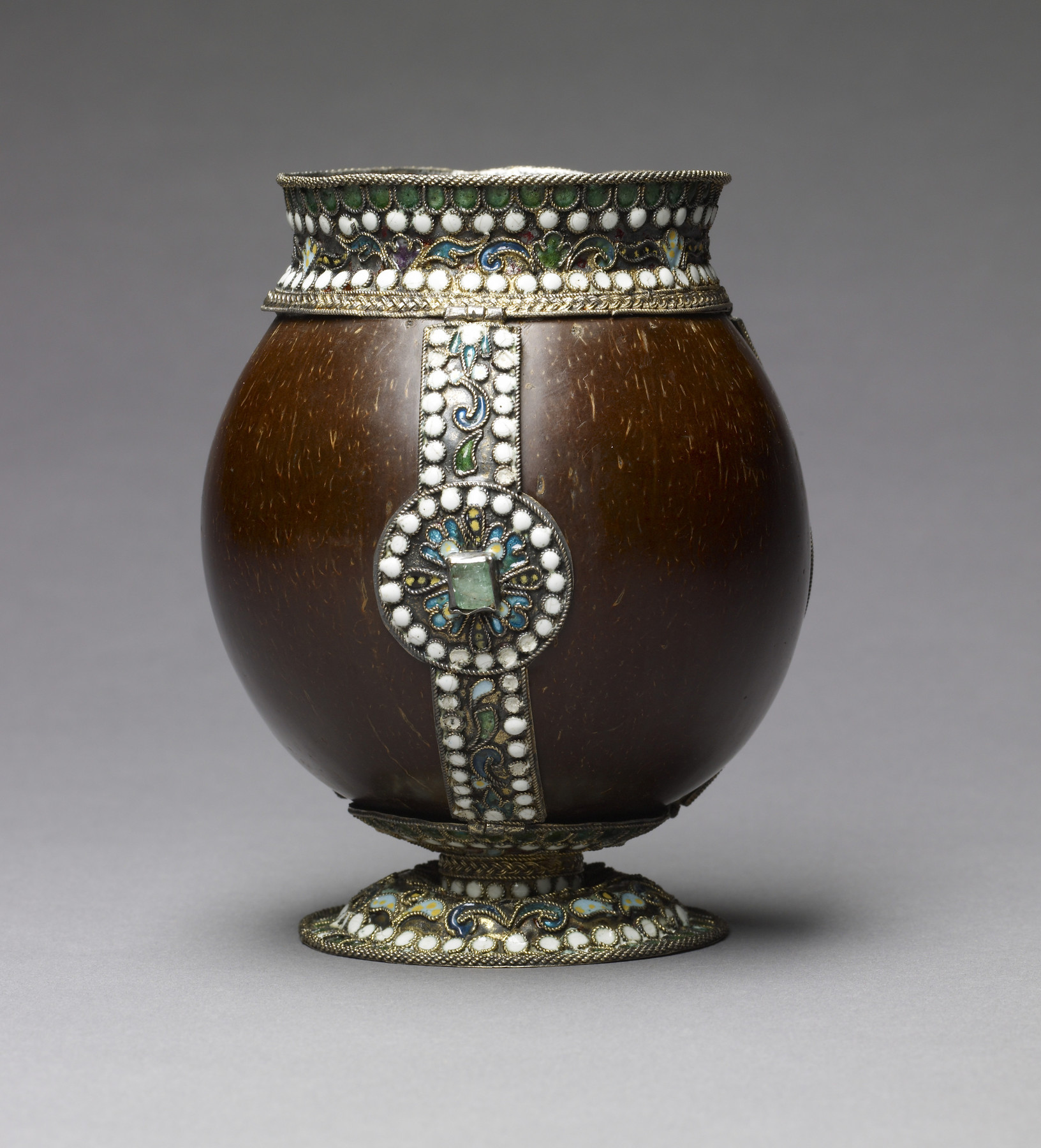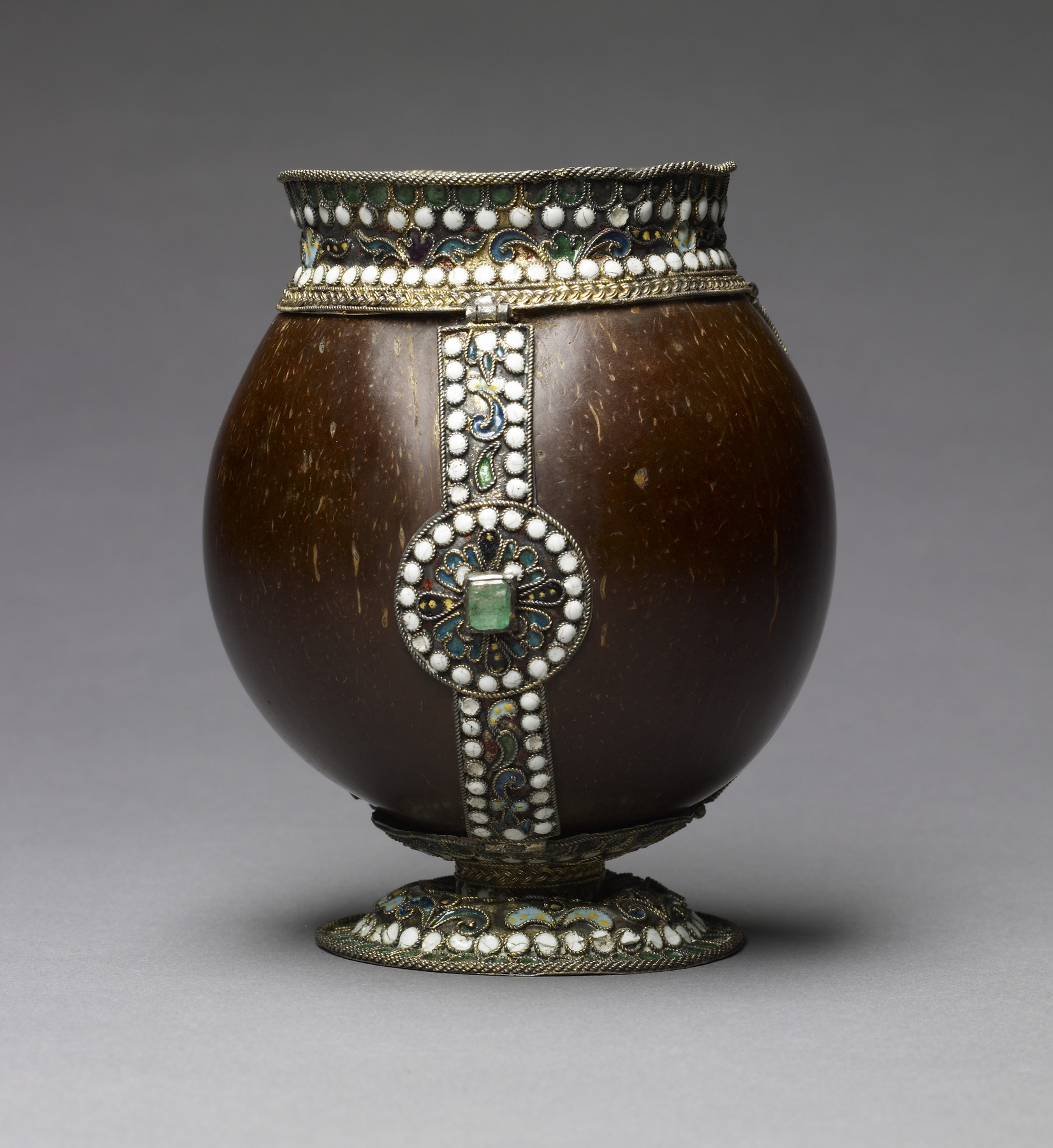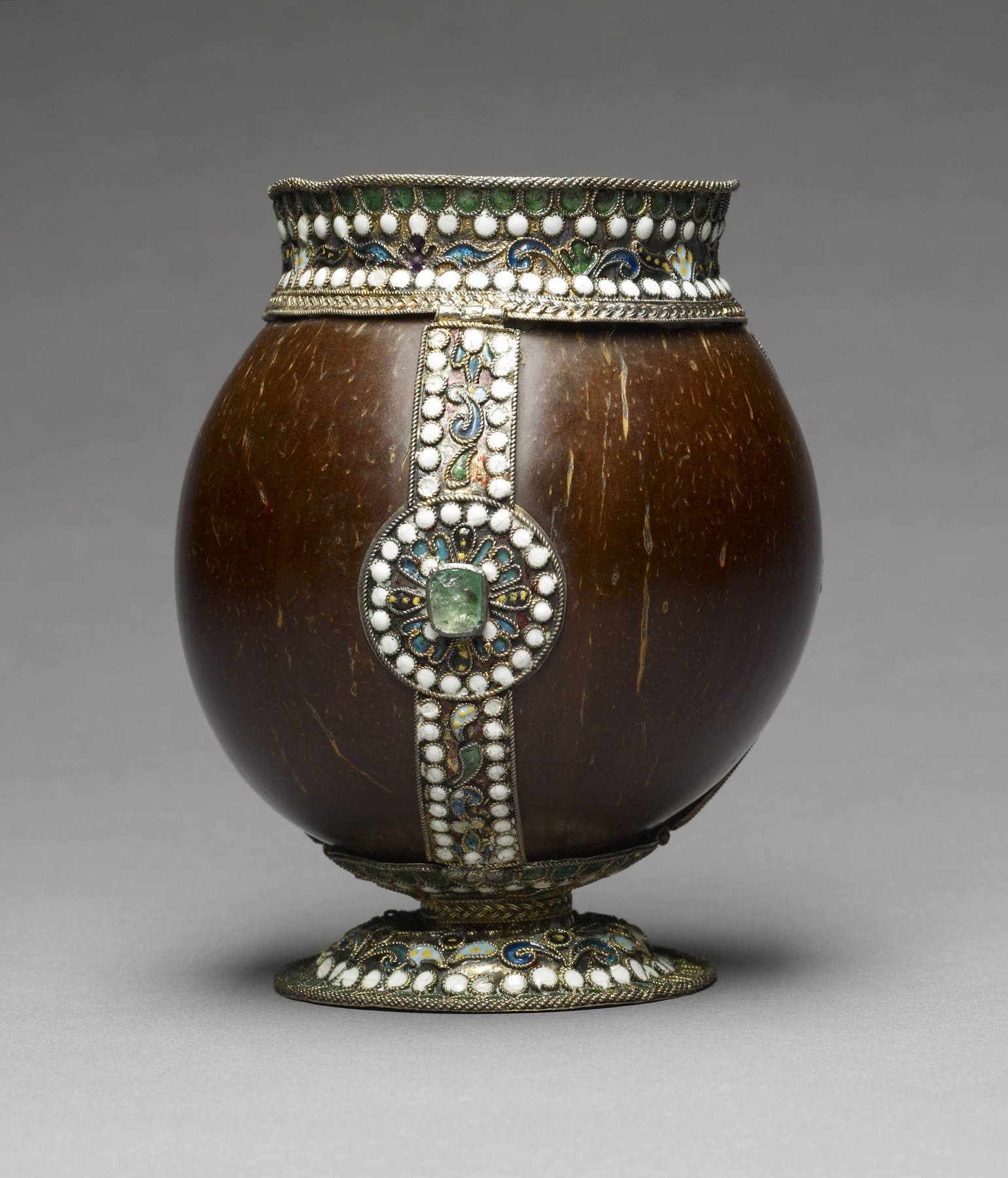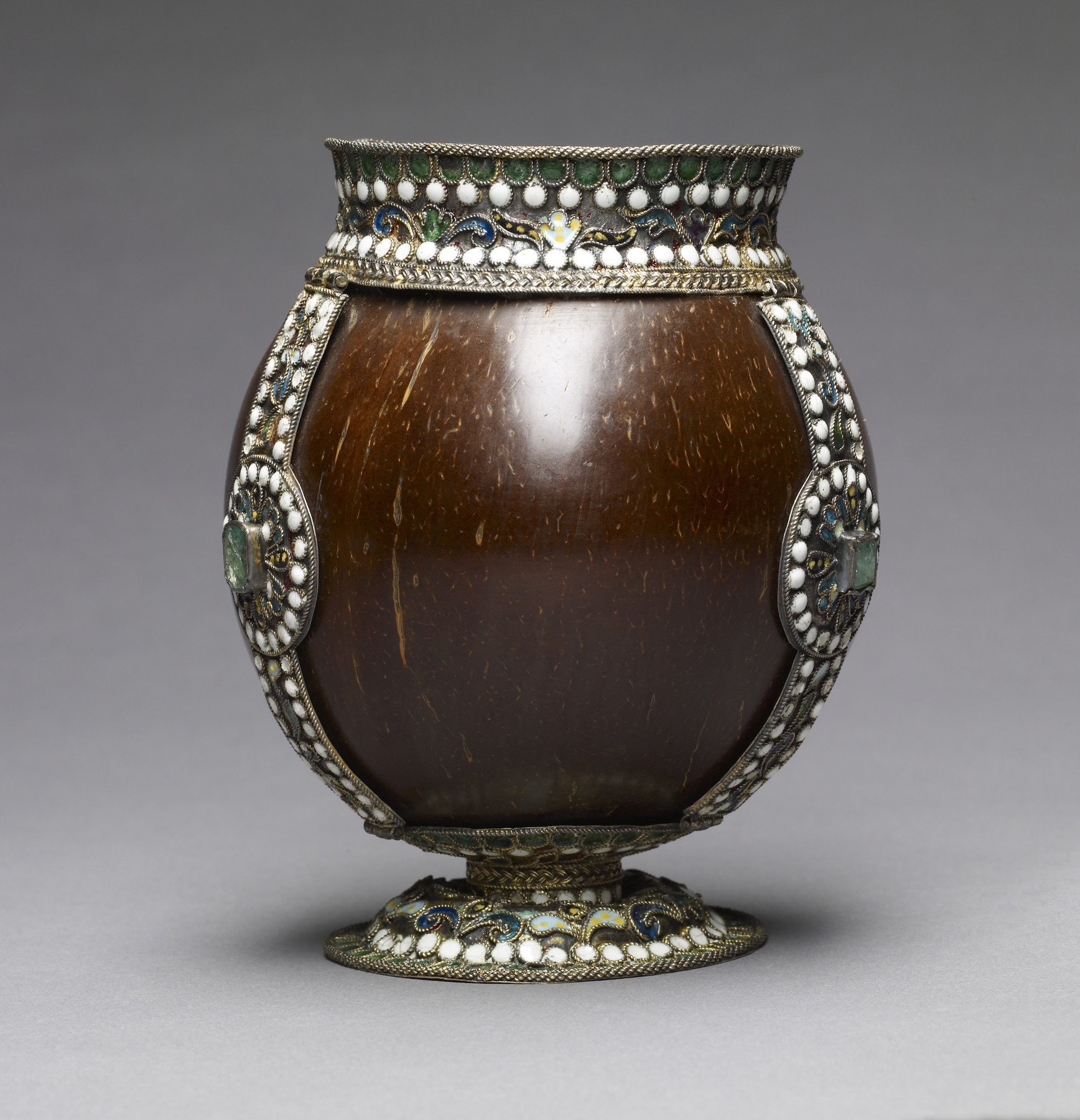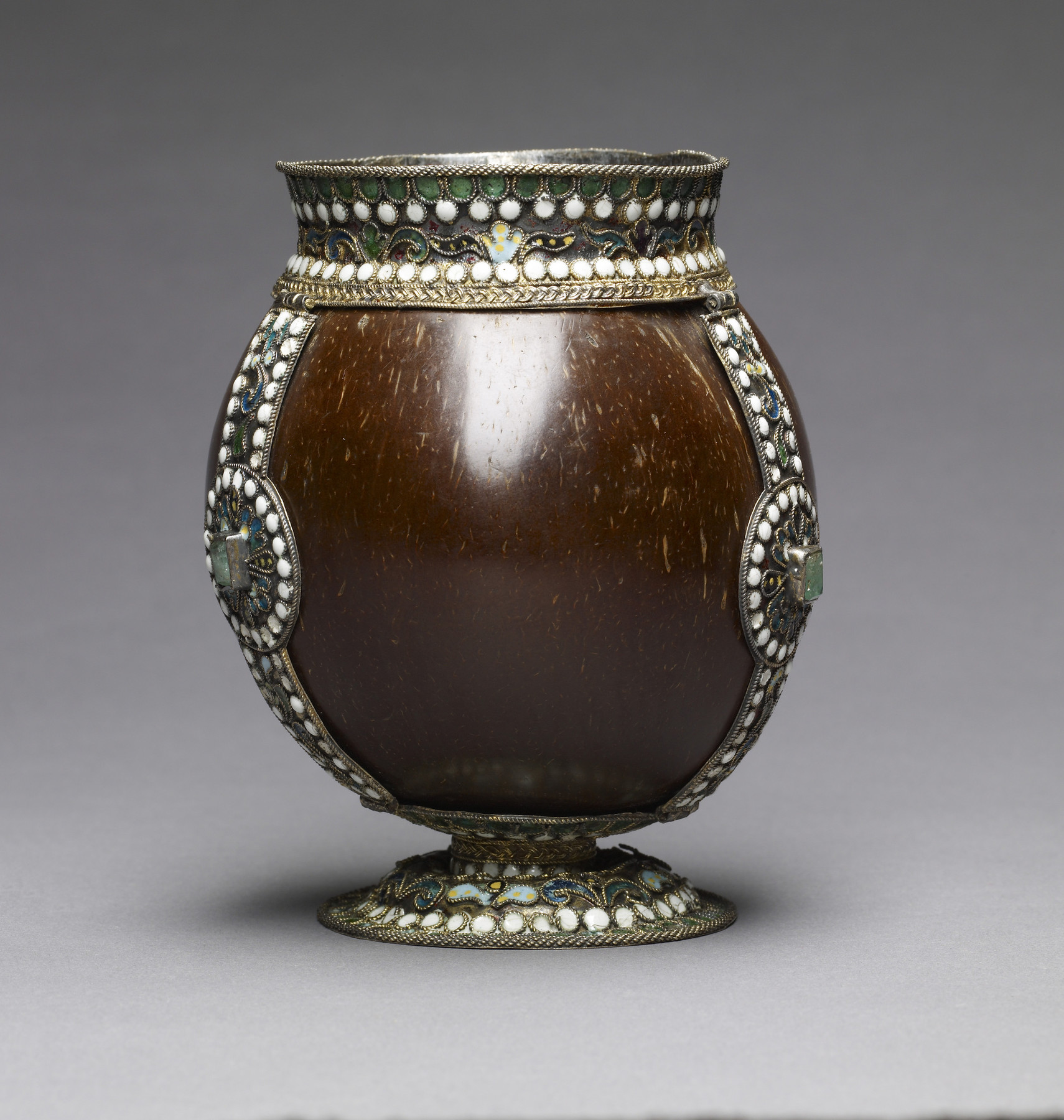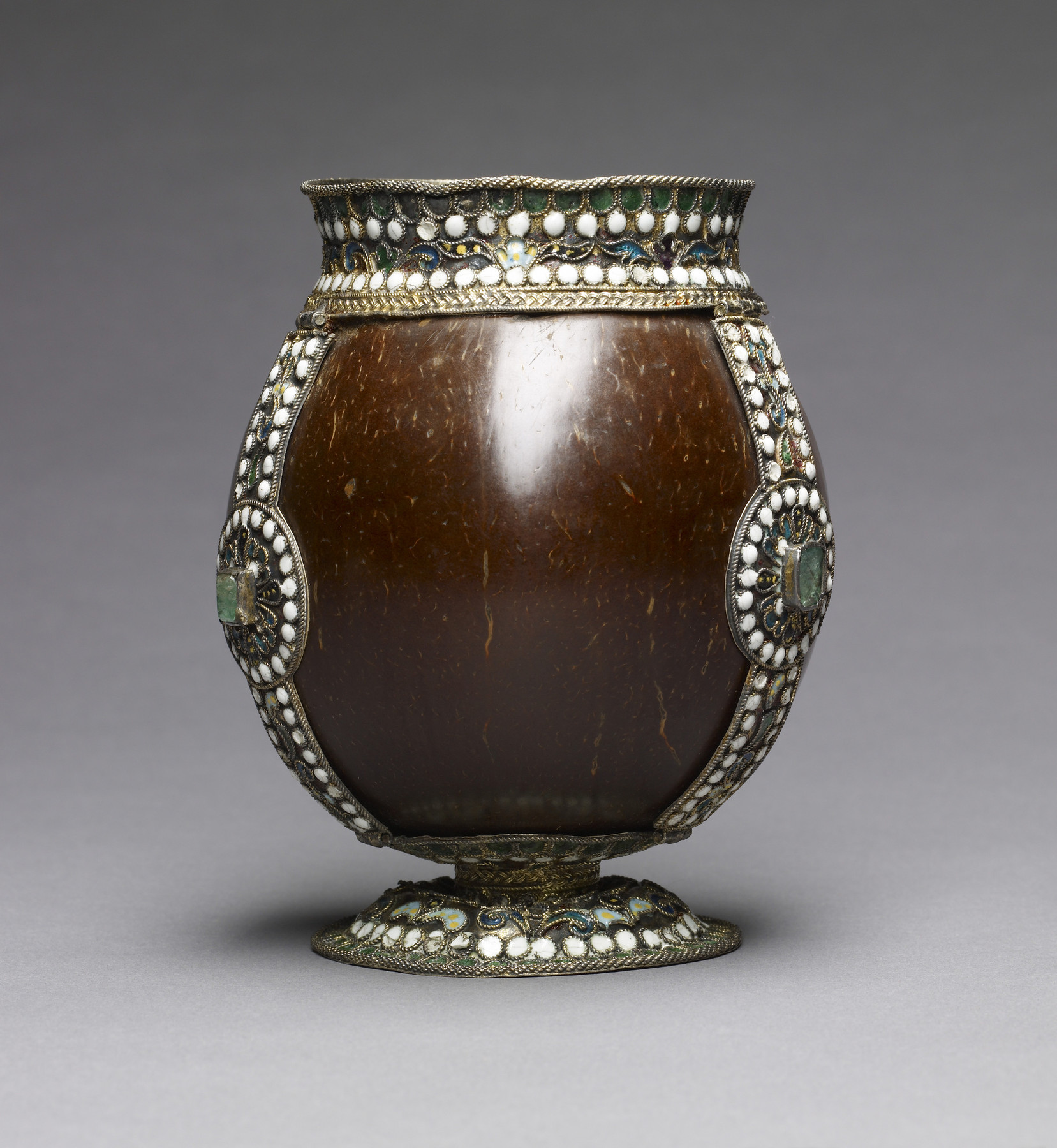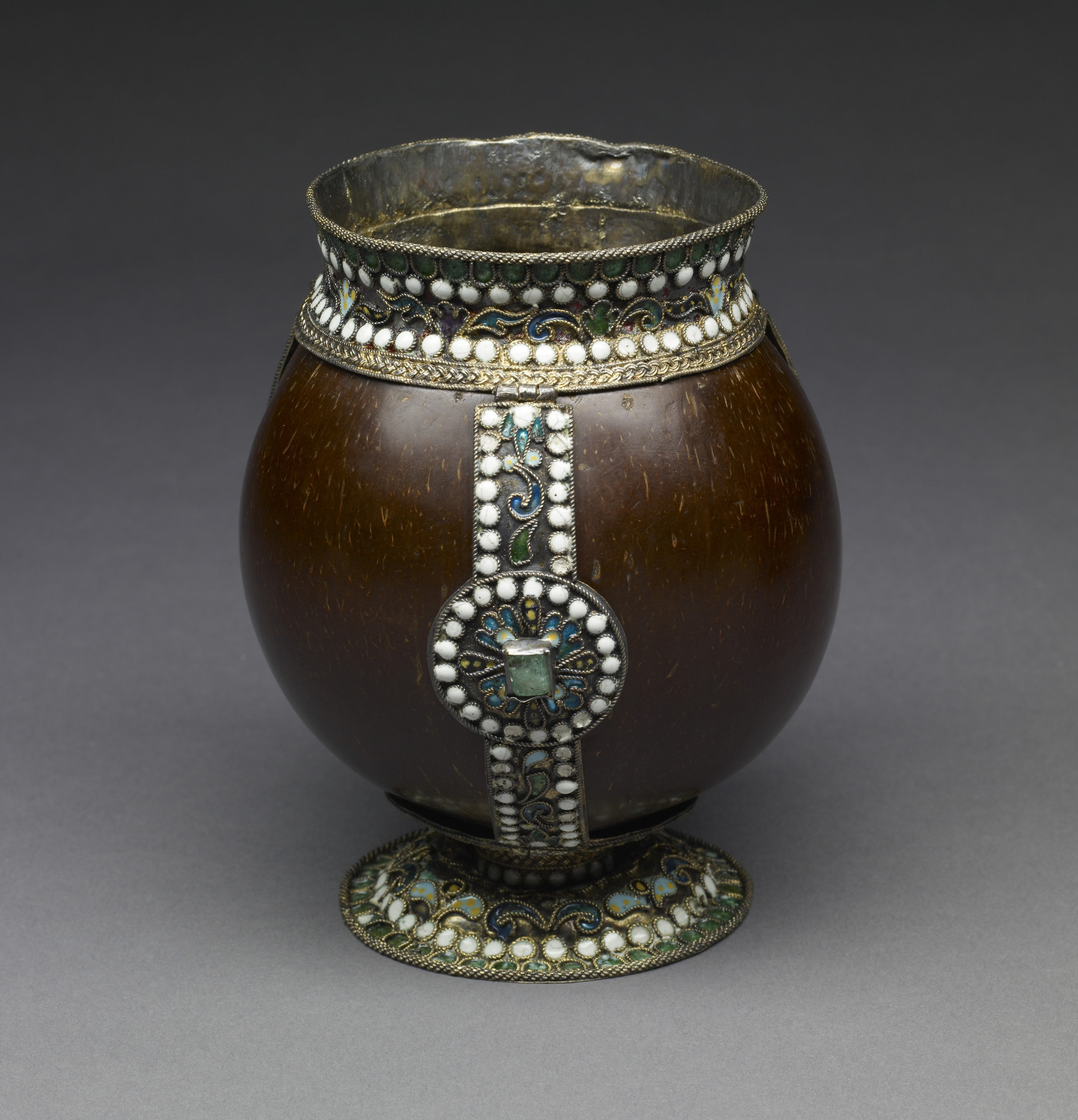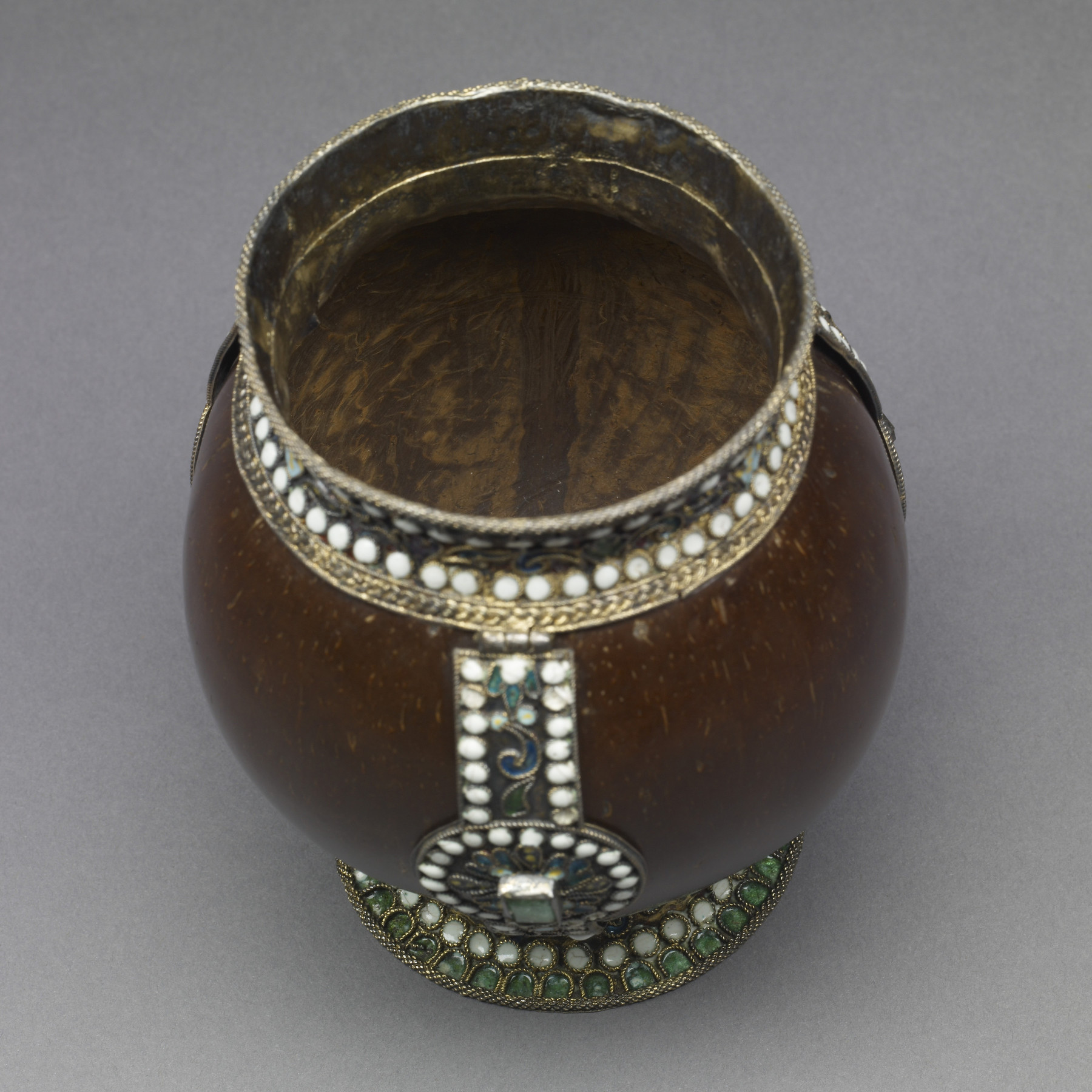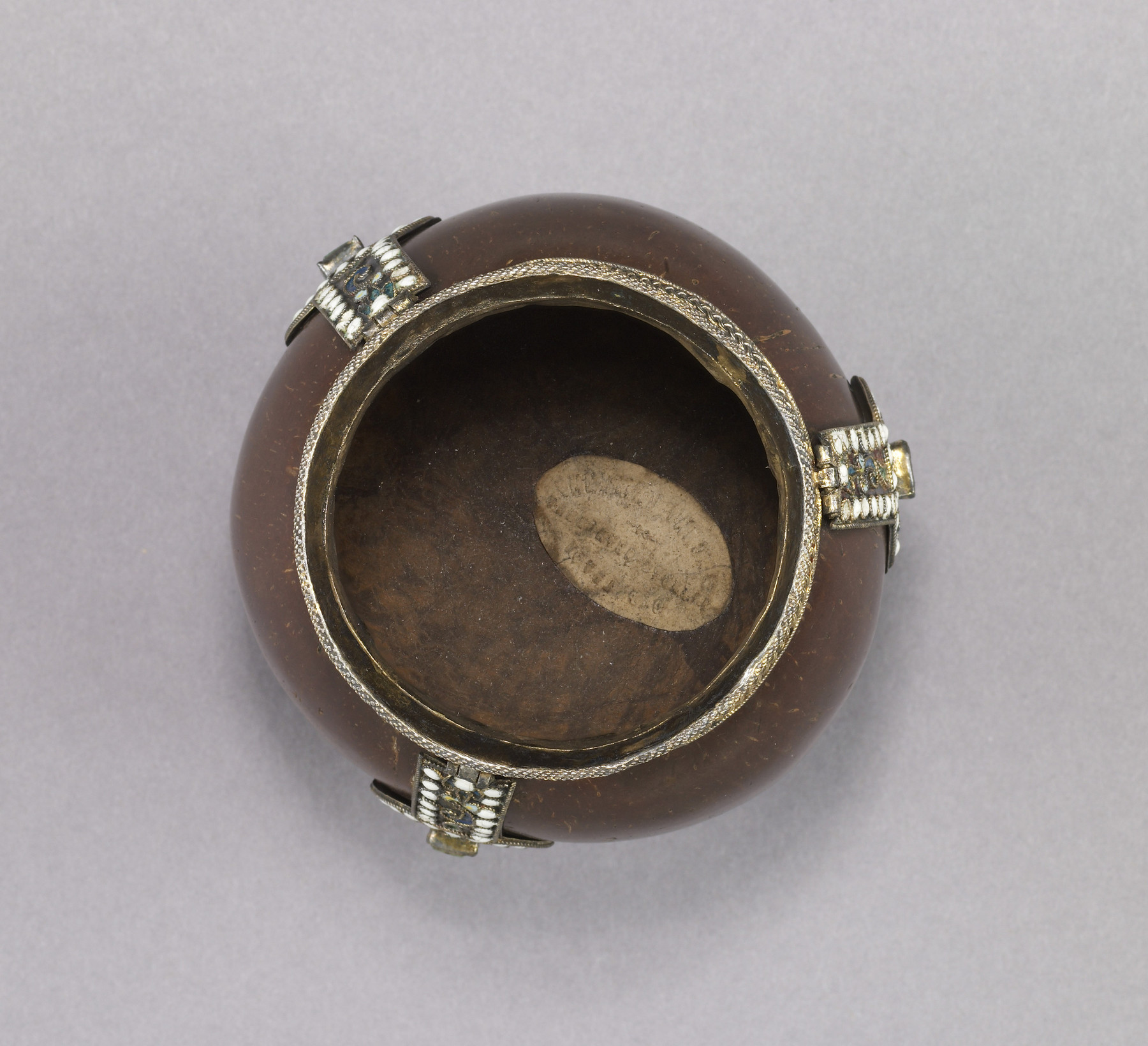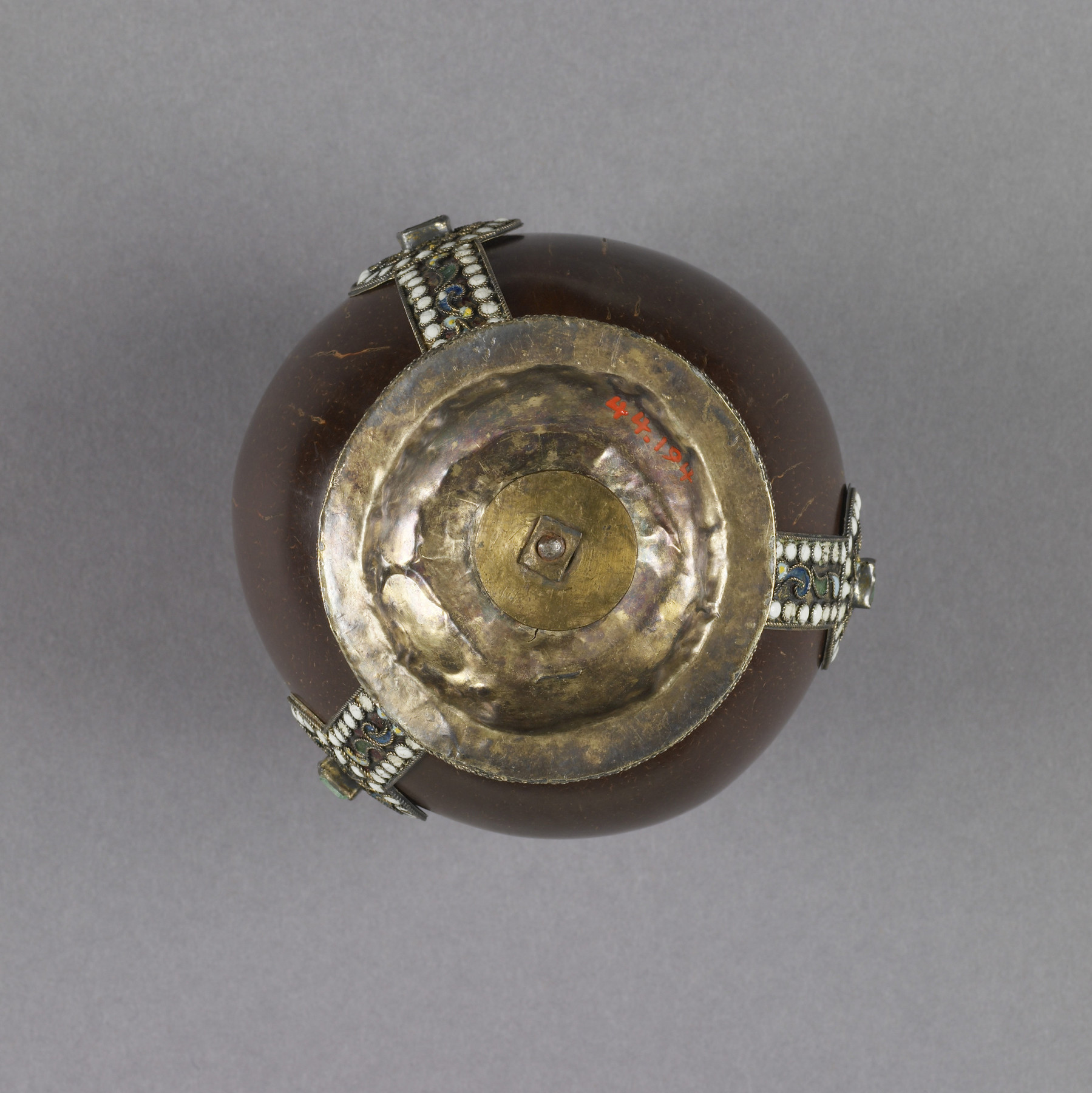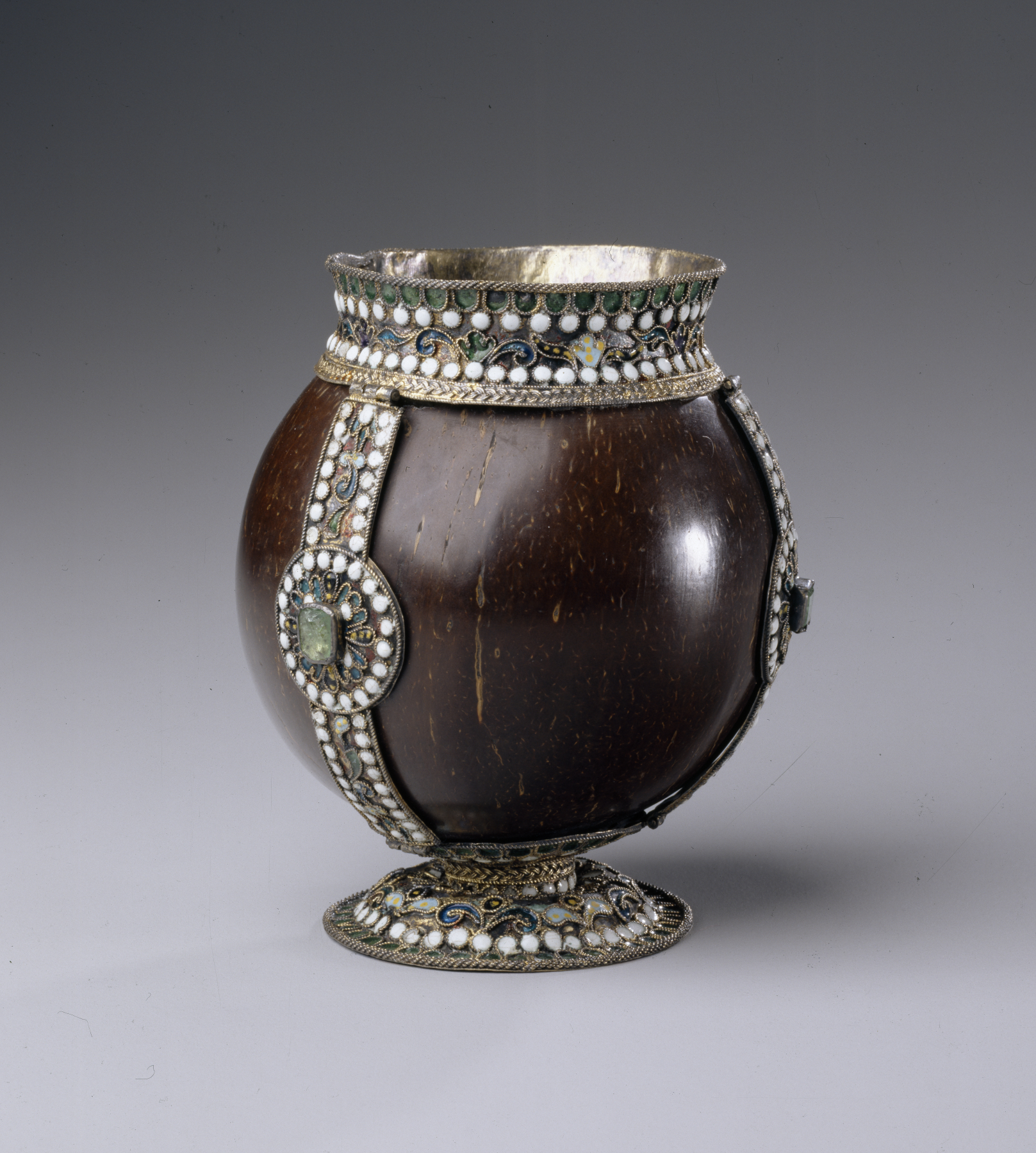Drinking Cup (Bratina)
(Baroque Europe )
Drinking cups like this one, called a "bratina" in Russian, were passed around at ceremonail banquets. They were usually made of gilded silver, but ours has been fashioned from a coconut shell. An exotic fruit in Northern Europe, coconuts were highly prized during the 17th century and often mounted in silver.
Provenance
Provenance (from the French provenir, 'to come from/forth') is the chronology of the ownership, custody, or location of a historical object. Learn more about provenance at the Walters.
Countess Luibov Aleksandrovna Musina-Pushkina (born Kusheleva-Bezborodko), Saint Petersburg, prior to 1904, by purchase; Aleksandr Aleksandrovich Polovtsov (Alexandre Polovtsoff), Saint Petersburg and Paris [date of acquisition unknown], by purchase; Henry Walters, Baltimore, [date of acquisition unknown] by purchase; Walters Art Museum, 1931, by bequest.
Exhibitions
| 2017-2018 | Fabergé and the Russian Crafts Tradition: An Empire's Legacy . The Walters Art Museum, Baltimore. |
| 1996-1997 | Russian Enamels. The Walters Art Gallery, Baltimore. |
| 1971-1972 | World of Wonder. The Walters Art Gallery, Baltimore. |
| 1959-1960 | Russian Art: Icons and Decorative Arts from the Origin to the Twentieth Century. The Walters Art Gallery, Baltimore. |
Geographies
Russia, Moscow (Place of Origin)
Measurements
Overall H: 4 5/8 × Diam: 3 15/16 in. (11.8 × 10 cm)
Credit Line
Acquired by Henry Walters
Location in Museum
Accession Number
In libraries, galleries, museums, and archives, an accession number is a unique identifier assigned to each object in the collection.
In libraries, galleries, museums, and archives, an accession number is a unique identifier assigned to each object in the collection.
44.194

